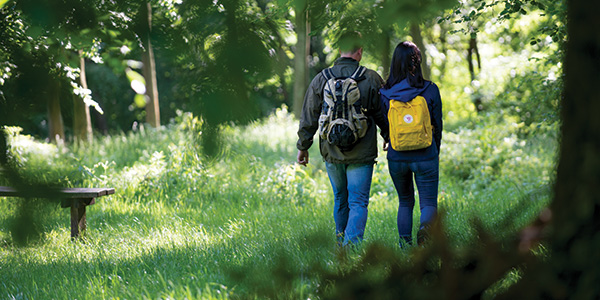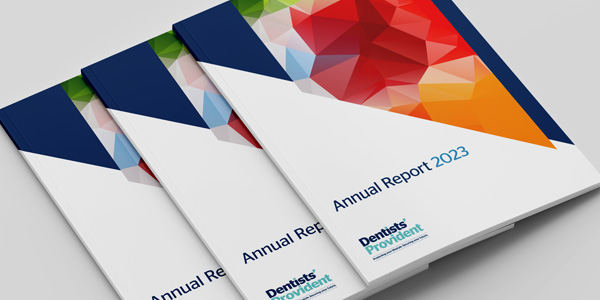
With social distancing being in place for the foreseeable future, how do we, personally and professionally, adjust to it and ensure the ‘new normal’ is as much like normal as it can be?
Geodemographic differences
Cultures around the world have always varied when it comes to deciding what level of personal space is acceptable; on top of that there are inevitable differences from person to person. But certain professionals such as dental professionals rely on that intimate closeness with or without a pair of loupes.
In 2017 a study entitled ‘Preferred Interpersonal Distances: A Global Comparison’ was published in the Journal of Cross-Cultural Psychology. The study found that the British generally like to keep a metre from a stranger, so as unnatural as it feels to social distance at the moment we are at least half way there already! This is compared to Argentinians who only tend to stay a maximum of 76cm from a stranger, 59cm from an acquaintance and 40 a friend. The British prefer 80cm from an acquaintance and just over 50 from a close friend.
Temperature, age and gender also have an impact on how we view personal space. The study grouped us into ‘contact cultures’ - these being predominantly South America, the Middle East and Southern Europe - and ‘non-contact cultures’ where people stand further apart and touch less, this being typical in Northern Europe, North America and Asia.
The study did find some commonalities across cultures. Women preferred more personal space with strangers than men in almost all of the countries studied and people living in warmer places tended to keep less distance than those in colder climes. Additionally the older you are, the further away you stand.
However while age does traditionally have a bearing on our acceptance of closeness, the younger generations such as millennials are now turning these assumptions on their head. Their chosen form of communications is predominantly online with social media, video and sharing platforms being their ‘normal’, so they already struggled more in face to face communication that their elders. So perhaps for many of this group, the forced isolation during the Coronavirus suits them more than the baby Boomer’s generation.
Cancer Research UK did some research a couple of years ago as part of one of their annual World Cancer Day campaigns and discovered that ‘44% of 18-24 year olds said they felt more comfortable using social media, messaging apps and online to talk to people they didn’t know, with only 37% feeling more comfortable speaking face to face. This compares to just over two thirds (67%) of those aged 55 and over.’
Social distancing our lives
We have all experienced someone coming too close into our personal space, maybe as much as we have felt too large a distance to be able to engage and communicate effectively. Whatever our personal and cultural preferences are, we are now being forced to cross the street to avoid getting too near to a stranger; to engage in a conversation in a shop queue unnaturally loudly so that everyone can hear and even stand behind a sheet of acrylic when being served at a till. This will take some getting used to and could create feelings of suspicion and isolation, but as humans we evolve and find the positives to be able to help and support each other in ways we haven’t needed to, or considered before.
Personal space in a dental practice
As experienced clinicians you’ve more than likely had your share of phobic patients or those who lean away when you greet them or sink into the chair before you even put any pressure in their mouths. And having the ability to read this reaction in a person, especially in a busy clinic and on a day-to-day, minute-by-minute basis can be hard to do, but vitally important in building trust and rapport.
Effective communication techniques
Patient communication models such as the ‘traditional’ medical model, the ‘patient as expert’ model, the ‘consumerist’ model and the ‘transformed medical model’ as well as communication skills advice and techniques with patients have been discussed and studied for many years. The GDC Principle Two ‘Communicate effectively with patients’ sets out standards and guidance that dental professionals should adhere to, and many experts and organisations including dental indemnity providers offer courses and advice for focusing and improving skills, with the principles essentially all being the same.
Mike Wanless, Clinical Director at Greater Manchester School for Dental Care Professionals, wrote a paper in Vital magazine in 2009 where he explored communication techniques and how to deal with that closeness in a dental setting. In his paper he discussed the need to be constantly and consistently aware of how patients react, however subtle it is. This can sometimes be hard in a busy surgery, but for the patient it is perhaps a one-off visit and the way they feel can be influenced by a dozen other factors outside of your control. So it is important to recognise and manage the ones you can control. Research has shown that we all make quick and often lasting judgments when we meet people, and patients can be very sensitive to how you greet them and the care and attention you pay towards them, so reading them is vitally important for those first encounters, especially if they are nervous and its one of their first experiences out of isolation.
Mike reported that these judgements could be classified as ‘verbal, paralinguistics and non-verbal communication. Verbal communication relates to what the person says. Paralinguistics relates to how they say it and includes voice tone and volume, speed of speech and the uhms and ahs they say. Non-verbal communication includes gestures, facial expression, eye contact, body language and clothes. Research has indicated that value judgements on the person communicating with us are based on these three factors in the following percentages: Verbal – 7%, Paralinguistics – 38% and non-verbal – 55%.’
He continues, stating that “You should also be aware of the effects of height and distance. Height is often associated with power. Patients may feel vulnerable if they have to look up at the person with whom they are communicating. For discussion as equals, both parties should be at an equal height. Shy people may feel more confident speaking if the other person is lower than they are. All people have an area of personal space and feel threatened if a person with whom they are not intimate invades it. You should look for non-verbal clues to check they are not too close to the person they are trying to help. They should also look for similar clues to indicate that they are not too distant. If they are too far away, communication will be lacking any sense of working together and is not likely to be effective. Some people need more personal space than others. City dwellers are used to having people around them and will tolerate the close proximity of strangers better than country dwellers. The appropriate distance varies with their relationship to the other person with whom they are communicating. The closer the relationship to the other person, the closer they will be tolerated. Because of the individual nature of personal space it is worth asking if the patient is comfortable with the standing or seating arrangements and moving either nearer or further apart if they are not.”
Social distancing in a dental practice
Of course with social distancing we are all experiencing a new normal in terms of our personal space, and the sensitivities described above need to be remembered, as well as the potential pitfalls they create being thought through with how to make the patients feel engaged and comfortable given the increased distance, as well as the physical barriers with PPE protection.
In April this year NHS England produced a new document entitled ‘COVID-19 guidance and standard operating procedure, Urgent dental care systems in the context of coronavirus’ showing you what you have to do to keep this distance in a practical sense, but it will be up to each member of the dental team to work out how to still maintain the softer side of communication.
Section 4.2.1.1 Patient management: social distancing and separation states amongst other instructions:
Although it is recognised that dental treatment will require closer contact, social distancing measures should be applied as far as possible throughout the service.
For all patients, physical (e.g. separate waiting areas and treatment rooms) and temporal (e.g. appropriately spaced appointments, sessions for specific patient groups) separation measures should be employed.
Appropriate zoning should be undertaken. Sites, areas and facilities should be demarcated clearly for the specific patient groups they have been designated to receive (e.g. to separate patients who are shielded or at increased risk).
Additional physical and temporal separation measures should be taken for shielded groups or groups at increased risk where possible, for example:
▪ Waiting rooms, reception and communal areas should allow for 2 metre separation, ideally marked on chairs and flooring.
▪ If staff in reception and communal areas are unable to maintain 2 metre separation with the public, they should wear a fluid-resistant surgical mask for a session.
All of us have already learnt new ways to communicate in our personal and professional lives whether it be video conferencing consultations or talking to a neighbour with a 2 metre gap, and it will take some time before practices can get back to how they were before. In the meantime, your focus will still be - as it always has been – on caring for your patients and teams, whatever government or health led barriers are there to negotiate.
References available on request.
This article is intended for general information only, it is not designed to provide financial, health or other advice, nor is it intended to make any recommendations regarding the suitability of any plans for any particular individual. Nothing in this article constitutes an invitation, inducement or offer to subscribe for membership or additional benefits of Dentists’ Provident.
No responsibility or liability is assumed by Dentists’ Provident or any copyright owner for any injury or damage to persons or property as a consequence of the reading, use or interpretation of its published content. Whilst every effort is made to ensure accuracy, Dentists’ Provident, the authors, Editors and copyright owners cannot be held responsible for published errors.
Dentists’ Provident exercises editorial control only over material published and/or produced by it. No responsibility or liability is assumed by Dentists’ Provident for any articles produced or reproduced in third party publications and/or websites.
The views or opinions expressed do not necessarily reflect views of Dentists’ Provident or copyright owners. Inclusion of any advertising material does not constitute a guarantee or endorsement of any products or services or the claims made by any manufacturer.
If you have any questions, please contact our member services consultants by emailing press@dentistsprovident.co.uk or calling 020 7400 5710.
If you have any questions, please contact our member services consultants by emailing
memberservices@dentistsprovident.co.uk or calling 020 7400 5710.

Our 2024 Annual General Meeting will be held at 91-94 Saffron Hill, London, EC1N 8QP on Friday 24th Ma…
Read more
The 2023 annual report from Dentists’ Provident, a leading income protection provider for dental profe…
Read more
Our next exhibition is the British Dental Conference & Dentistry Show in May, where we look forward to meeting anyone interested in becoming a member or members wanting to discuss their plans.